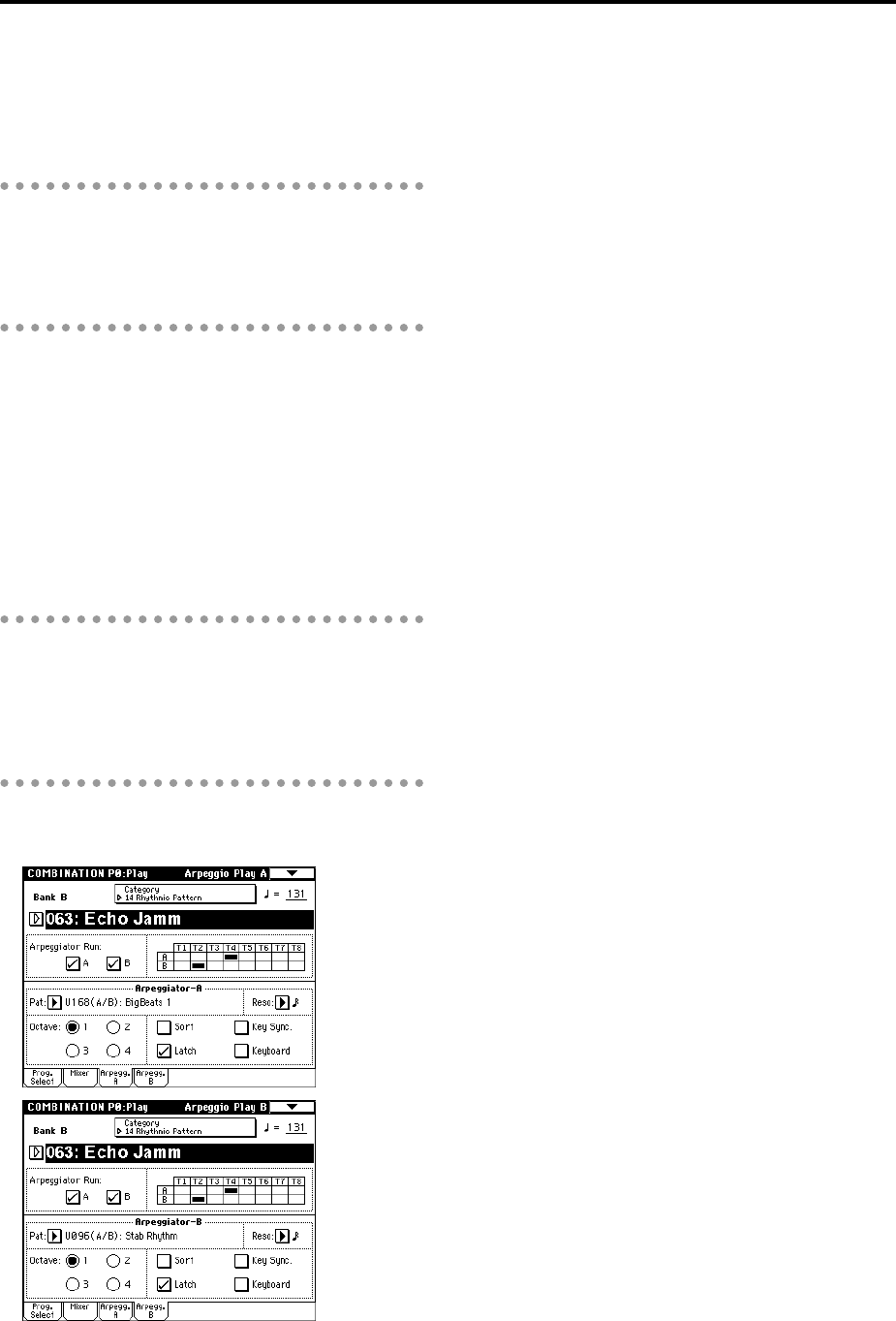
32
Arpeggiator-A, Arpeggiator-B
For each arpeggiator A and B, you can make settings
for “Pattern Select,” “Resolution,” “Octave,” “Sort,”
“Latch,” “Key Sync,” and “Keyboard.” (
☞p.96)
Other settings for the arpeggiator
You can also set “Gate,” “Velocity,” “Swing,” and
“Scan Zone.” These parameters are set in Combination
P7: Arpeggiator (
☞p.99).
Linking the arpeggiator to combinations
You can specify whether the arpeggiator settings writ-
ten in a combination will also be selected when you
switch combinations, or whether the arpeggiator status
will not change when you switch combinations.
With the factory settings, the former is selected. Use
the latter when you want to keep the same arpeggio
pattern running, and change only the combination
sound.
This setting is made in “Auto Arpeggiator” (Global P0:
Basic tab).
Creating an user arpeggio pattern
Arpeggio patterns that you create can be written to
U000–231.
These can be created in Global P6: User Arpeggio
(
☞p.100).
Checking the structure of a user arpeggio pattern
Combination B063: Echo Jamm
1 Select combination B063: Echo Jamm, and look at
the Arpegg. A tab and Arpegg. B tab.
• Arpeggiator A is assigned to T (timbre) 4, and
arpeggiator B is assigned to T (timbre) 2. When
you play the keyboard, the T4 program B068:
Drum’n’Bass Kit will be sounded by the U168:
Bigbeats 1 arpeggio pattern. The T2 program B053:
Funkin’ Guitar will be sounded by the U096: Stab
Rhythm arpeggio pattern.
• If you uncheck “Arpeggiator Run A” or
“Arpeggiator Run B,” the unchecked arpeggiator
will stop.
If you check it once again and play the keyboard,
the arpeggiator will begin running.
• The “Scan Zone Key” is set so that notes B3 and
below will use arpeggiator A, and notes C4 and
above will use arpeggiator B. (These settings are
made I Combination P7: Scan Zone A/B tab
parameters A and B, “Top Key” and “Bottom
Key.”)


















